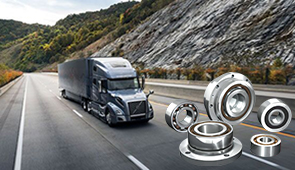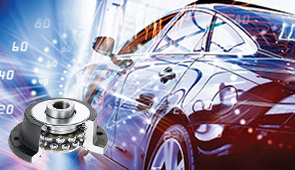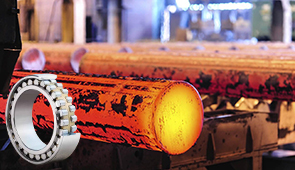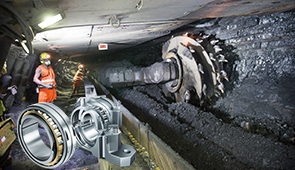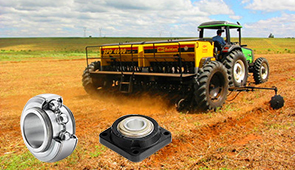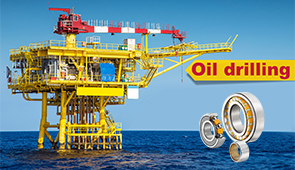The Essential Guide to Automotive Oil Seals: What You Need to Know
Oil seals are a critical component in the efficient operation and longevity of automotive systems, yet they often go unnoticed by the average vehicle owner. Acting as a barrier to prevent lubricant leakage and block contaminants from penetrating essential machinery, oil seals play a vital role in maintaining the performance and reliability of your vehicle. However, understanding how oil seals function, their various types, and the key factors in selecting the right seal for specific applications can be daunting. This guide aims to demystify oil seals, providing a comprehensive look at their purpose, design, and importance in automotive engineering. Whether you’re a car enthusiast, a mechanic, or someone looking to deepen their technical knowledge, this article will arm you with the insights necessary to appreciate and maintain this indispensable automotive component.
What is an Oil Seal and How Does it Work?

Understanding the Basics of Oil Seals
Oil sealing units are amongst the most essential sealing components of machinery and automotive systems. It is their primary responsibility to seal any gap that lies between stationary and moving mechanical parts to avoid lubricant leakage through the seal. It also, conversely, seals out any contaminating agents such as dirt, debris, and moisture that may greatly affect performance and life.
In standard construction, there are three major components: the metal case, the sealing element, and a garter spring. The metal case gives the seal rigidity and an accurate fit in the housing or bore. The sealing element, made from elastomeric polymer in most instances, forms a seal against the shaft surface, while the garter spring applies a radial force so that the sealing element maintains contact with the shaft at all times. This design enables oil seals to operate against various temperature, pressure, and speed scenarios, thus greatly enhancing their versatility.
Oil seals are oil-retaining devices, widely put into use in different places such as engine assemblies, gearboxes, and axles for retaining the engine lubrication and preventing oil loss. The effectiveness of the seal will depend upon the correct material, the fitting of the seal, installation, and how well it is maintained, the latter involving both layout and considerations concerning wear. The knowledge of their construction and what they are for will provide some insight into how vital an oil seal is to the effectiveness of automotive and industrial machinery.
The Role of Oil Seals in Automotive Applications
Oil seals play a major role with regard to ensuring the functioning and longevity of automotive systems. They prevent lubricant leakage and keep contaminants from entering the components. Oil seals are situated at places with engine crankshafts, the transmission system, and wheel hubs. Oil seals serve as a barrier that separates adequate lubrication in these places for the smooth operation of the mechanisms. In the absence of sealings or with an inefficient oil seal, lubricants escape at an unanticipated rate, thereby causing higher friction and heat, which leads to the wear of the components.
Oil seals are made of materials that can withstand the harsh environment of heat, pressure, and chemical interaction with the lubricant. Some commonly used materials include nitrile rubber, and fluoroelastomers provide sealing with durable performance in severe environments. Great care is to be taken in the sizing and alignment of oil seals to prevent operational problems such as premature wear or movement. It further serves in minimizing mechanical. The function of oil seals, accordingly, results in energy loss reduction.
Oil seals should be inspected regularly and maintained to avoid their failure, which can lead to costly repairs and operational loss. Seal failure would mean dirt and moisture getting into the system, which would cause corrosion or misalignment of components. By replacing oil seals during scheduled services, automotive systems can continue to be trustworthy and efficient, thus guaranteeing maximum performance and working life. Consistent performance of oil sealing systems is an absolute necessity in furthering the operational integrity of automotive systems.
Common Types of Oil Seals in Cars
Oil seals, shaft or radial lip seals, are extremely important in automotive systems to prevent the loss of lubricants and foreign particles from entering. There are several types of oil seals used in present-day vehicles, and they are targeted at particular applications in different components of the car.
- Dynamic Seals: Dynamic seals are employed where two surfaces in contact are from one degree of freedom to another, such as engine crankshaft seals, camshaft seals, or drive shaft seals. These seals are required to maintain a tight seal while in a rotating or reciprocating motion. The used material normally depends on application requirements; in general, nitrile rubber (NBR) is used for dynamic seals, such as resistance to oil, and moderate temperatures.
- Static Seals: Static seals are those employed between mating surfaces that remain stationary. These are usually between the transmission housing and its associated components. Wear on these seals is usually very minimal because very little or no motion exists between the surfaces. However, depending on the application, these seals may have to withstand pressure or temperature changes. Common materials used for static seals are felt, rubber, and composite materials.
- Dual Lip Seals: Dual lip seals contain some form of a secondary lip that serves as a barrier to dust or contaminants and thus enhances seal life under harsher environmental conditions. They are normally used on off-road vehicles, trucks, or other systems traveling in areas with a significant level of debris so that contaminants do not get into the critical internal components.
Each type of oil seal is chosen according to the specific operational demands, such as temperature tolerance, pressure applied, and contaminant presence. Choosing the right seal must go hand-in-hand with its maintenance in everyday working procedures to assure a high level of vehicle performance and prevent system-failure occurrences.
How to Select the Right Automotive Oil Seals?
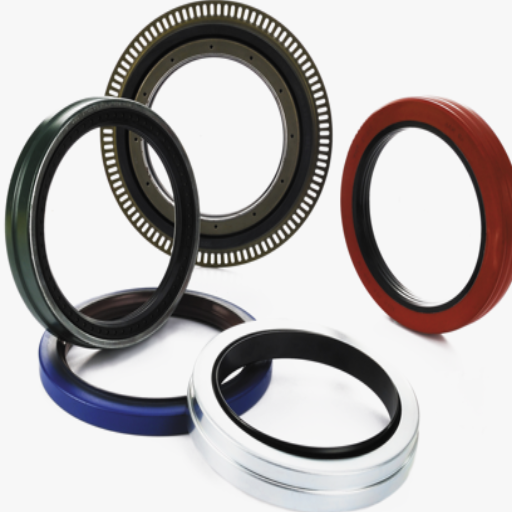
Factors to Consider: Size, Material, and Shape
When selecting automotive oil seals, it is pertinent that technical consideration be given to factors such as size, material composition, and design shape to ensure application compatibility. The exact dimensions of the seal size must coincide with the shaft and the housing or bore to make leakage or compromise of the integrity of the assembly impossible. The inner diameter, outside diameter, and width must all be measured correctly and according to the manufacturer’s specifications because any flaw in the measurements can affect the sealing efficiency.
The choice of seal material depends on the operating environment and on the types of fluids with which the seal will have to be in contact. Nitrile rubber (NBR) is the most commonly used seal material because it is resistant to oils and can function at seal temperatures ranging from approximately -40˚F to +250˚F. Fluorocarbon-SEBS seals are suitable for extremely high temperatures or applications involving aggressive chemicals. Polyacrylate and silicone can be considered for particular thermal or environmental conditions.
For the shape functionally, the design of the seal will have an impact on its operation and on its life expectancy. Single lip designs offer protection against contaminants in uncomplicated applications. Double lip designs provide a much higher degree of separating power, suitable for complex environmental conditions. In more complex situations, seals will often have special design features such as dust lips or spring-energized edges to maintain contact pressure so as to further enhance the durability of the system. Finally, based on the application considerations above, the optimum combination will ensure that an oil seal will perform reliably within desired engineering tolerances.
Understanding Seal Specifications and Standards
Seal specifications and standards are important in assuring compatibility, performance, and durability for various mechanical applications. Key parameters such as the choice of materials, temperature, pressure range, and chemical resistance must all be well matched according to the application. As an example, seals made of nitrile rubber (NBR) have very good compatibility with oils and fuels, whereas fluorocarbon rubber (FKM) would offer better protection against high temperatures and aggressive chemicals.
Globally accepted standards, such as ISO 6194 relating to rotary shaft seals, as well as DIN 3760, lay out precise requirements to create interchangeability and guarantee quality. These standards define critical dimensions such as shaft diameter, housing bore, and sealing lip profile, and performance criteria such as permissible friction levels and leakage rates. These specifications, when followed, guarantee that the seal will behave predictably within its intended industrial settings and prevent system failures that would occur from misalignment or degradation of the product.
By utilizing these strict standards, an engineer will be simultaneously sure that their design intent is satisfied and promotes system integrity overall.
How to Properly Install Oil Seals?
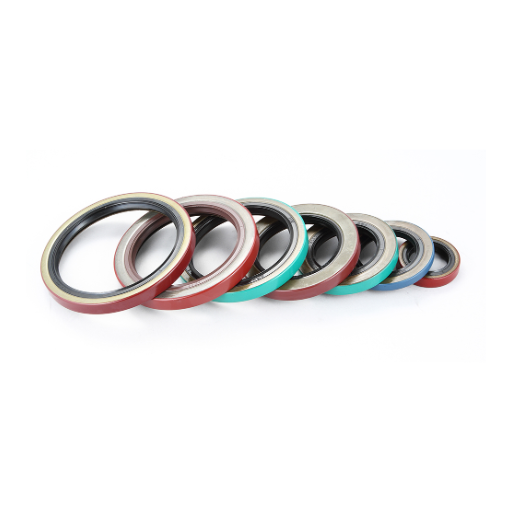
Step-by-Step Guide to Seal Installation
- Inspect the Components: Before installation, all components must be clean and free of foreign matter, dirt, rust, or burrs. This applies to the housing bore and shaft. Any imperfection will interfere with the sealing or bear upon premature wear.
- Verify Seal Dimensions: Check that the oil seal dimension accords with that specified for the application. Adequate fit is important insofar as it may be required for sealing, whereas unsuitable sizing can allow operational leakage to occur during runtime.
- Lubricate the Seal and Shaft
- A thin film of lubricant compatible with the materials involved should be placed on both the oil seal inner lip and the shaft. Friction is minimized during installation, reducing damage to the sealing lip, thereby ensuring proper seating.
- Place the Seal: Check the orientation of the seal. In most designs, the sealing lip faces the medium to be retained, usually oil or lubricants. Always check the manufacturer’s instructions for correct alignment.
- Use Appropriate Installation Tools: Use a seal driver or press specifically designed for installing oil seals. Do not improvise with other tools, as they can cause deformation of the seal. Pressure should be applied evenly around the circumference of the seal to avoid misalignment.
- Press Seal: Press the seal into the housing bore slowly, ensuring it is flush with the edge of the housing and evenly seated. An uneven press will create gaps and lose the capability of sealing. When high-speed applications are involved, very careful alignment is required.
- Check for Proper Fitment: After installation, a visual check should be made to confirm it is properly seated and is free of any deformation. The shaft should be rotated and checked for smooth movement without undue resistance, verifying that the lip of the seal is in proper contact.
- Conduct Functional Testing: The system should be assembled with pressure testing performed to confirm that the seal performs its intended function under the specified conditions without leakage. Testing should ideally be performed with the actual conditions under which it is expected to operate.
By strictly following all these detailed steps, either engineers or technicians will be able to secure a dependable sealing installation against leakage, thus contributing to the longevity and functionality of their systems.
Tools Required for Oil Seal Installation
Proper installation of an oil seal is all about using specialized tools and techniques that ensure proper fitment and functionality. Below is a detailed list of the tools necessary for the procedure:
- Seal Driver or Installation Tool: Seal drivers are designed to press the oil seal evenly into place without deformation or damage. These tools have interchangeable size caps to suit various seal dimensions.
- Soft-Faced Hammer: Used along with a seal driver, the soft-faced hammer applies force with control while seating the seal so as not to scratch or dent the surface.
- Calipers or Micrometer: Precise measurement of shaft and housing diameters is a very important matter that should have been ensured during preparation for compatibility with the oil seal. Digital calipers would set precise values for inner and outer diameters.
- Retaining Ring Pliers: If the oil seal assembly uses retaining rings, these pliers can safely remove or place the retaining rings without affecting the finish of the surfaces.
- Torque Wrench: To tighten fasteners or bolts of the seal housing with the torque recommended by the manufacturer to avoid loose or uneven connections.
- Degreasing Solvent and Cleaning Cloths: Required in cleaning the shaft, housing, and all surfaces that will come in contact with the seals. Dirtiness, like oil or debris, reduces sealing efficiency.
- Lubricants or Installation Grease: A thin film of compatible lubricant, such as silicone grease or assembly lube, is applied to the inner lip of the seals to protect the seal during installation and early run-in.
- Inspection Mirror and Flashlight: When limited visibility or tight spaces are encountered, these inspection mirrors, coupled with a flashlight, can assist in ensuring correct alignment and placement of the seal.
- Circlip Tool: Should the shaft have a circlip groove, this tool will make for easy placement or removal of the circlip before seal installation.
- Protective Gloves and Safety Gear: Gloves, safety glasses, and any other PPE suitable for protecting hands against any surface-related hazard or airborne particle should be worn.
Using the right tools not only assures a good working oil seal but also shields it from premature wear, leaks, and a potential system malfunction. Always consult the oil seal manufacturer for specific tools and installation instructions.
Common Mistakes to Avoid During Installation
- Wrong Size Selection: One of the most common errors is choosing an oil seal that does not correspond with the specifications of the application. A wrong-size oil seal might get seated improperly and perhaps leak and fail under pressure. Shaft diameter, bore size, and width should be checked concerning both the manufacturer’s guidelines and the application requirements.
- Improper Handling of the Seal: Without proper handling, an oil seal might compromise its efficacy. Do not allow any bending or excessive stretching to contaminate the seal material before installation. Even a small nick or deformation can compromise the seal to hold pressure or resist leakage.
- Insufficient and Wrong Lubrication: If you install the seal without lubrication or with improper lubrication, there will be friction and thus wear right away. Proper lubrication eases the installation and prevents damage. Check the manufacturer’s product data for recommended lubricants.
- Failure to Inspect Surface for Installation: Not cleaning or checking the shaft and bore for surface defects may affect seal performance heavily. All surfaces need to be fair-dirty and clean, without dirt or contamination, scratches, or anything that might threaten the seal.
- Errors in Installation Techniques: Overbearing or using the wrong tool for installation is a big mistake. Applying force improperly might deform either the seal or the housing. Whenever possible, use special tools, such as seal drivers or presses, to provide even, precision installation without damaging either the seal or the mounting surface.
Avoiding these pitfalls will greatly enhance the life span of the oil seal and give better reliability to the entire system. Regular training and its enforcement based on an updated set of guidelines from manufacturers and industry standards will drastically reduce errors during installation and the costs associated with these.
What are the Common Issues with Oil Seals?
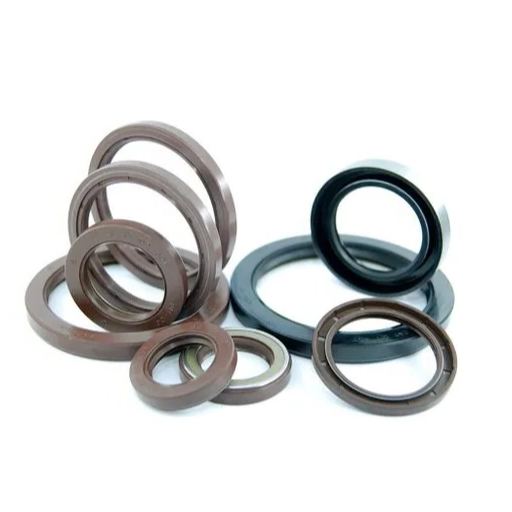
Recognizing Symptoms of a Faulty Oil Seal
Different symptoms can show a faulty oil seal, signaling inefficiencies within the system or a possible breakdown. Oil leakage at the point of mounting of the seal ranks foremost amongst such telltale signs, arising from improper sealing or due to physical wear. When exposed to harsh environmental conditions like heat, pressure, and impurities, the seal material gradually degrades to develops cracks or deformities. This imperfection compromises the seal’s capacity to retain oil and protect the internal components from external contaminants, thus impinging on the performance and safety of machinery.
Thus, a failing oil seal may also increase vibrations or noise levels in the operation of an engine. These symptoms are generally caused by misalignment or faults in installation, or severe wear and tear caused on seal or shaft surfaces. Moreover, dirt ingress through a compromised oil seal-which is unlikely to be good news-is fondly remembered by components as their speed to wear out will be quicker. If not addressed soon, operational inaccuracies will occur, delays, and this will lead to complete equipment failure. Thus, diagnosing these symptoms at the earliest is needed to curb further damage and downtime during operations.
Ableideshala operating temperatures or fluctuations in pressures inside the system may suggest that the oil seal is not functioning correctly. When seals lose elasticity or get extremely rigid due to heat, age, or chemical reactions, the seal might not be able to perform its function to maintain sealing. It is advisable to inspect seal damage visible to hardening, pitting, or scoring through monitoring of machinery conditions. A preventive maintenance program based on industry standards and top current guidelines from seal manufacturers will greatly reduce the risk of oil seal failure and optimize machinery reliability.
How to Prevent Oil Leaks in Automotive Systems
The prevention of oil leaks in automotive systems requires a multifaceted approach of maintenance, material selection, and manufacturer compliance. Well worth is the continuous monitoring of critical components like oil seals, gaskets, and hoses. Such components can lose their strength by exposure to heat, pressure, or contaminants. Concomitant inspection of the vehicle assists in early detection of signs of wear or hardening, or even cracking that can lead to actual leaks. In addition, timely flushing and exchange of the engine oil according to the intervals recommended by the automotive industry probably keeps sludge from building up, which might impose all internal pressure that can strain the seals.
The method used in installation, together with the quality of sealing components, matters. Replacing seals or gaskets needs to be done with the appropriate material, which takes care of the specific operating conditions of the vehicle, for example, high-temperature resistance or compatibility with a given type of oil. Materials such as Viton or other advanced elastomers have been designed to provide enhanced resistance against chemicals and temperatures. In addition, ensuring components are torqued to the requirement and secured adequately during installation reduces the chance of misalignment, which is one of the main causes of oil leakage.
Lastly, when systems are evaluated and optimized, potential inefficiencies may be exploited to greatly reduce leakage. For example, excessive pressure build-up inside the engine or oil reservoir, usually due to clogged breather valves or malfunctioning components, could be enormous stress upon the whole lubrication system. Cleaning of breather mechanisms regularly and monitoring of oil pressure via on-board diagnostic systems provides very useful real-time data that is relevant for early intervention. When combined, the best practices of preventive maintenance and advanced diagnostics can ensure the long-term robustness of an automotive system, thereby ensuring it does not leak oil, leaving the vehicle to perform at a higher reliability profile.
Maintenance Tips for Extending Seal Life
- Proper Installation: One of the most predominant causes of early seal failure is improper installation. Using manufacturer-recommended tools and installation procedures is essential to avoid problems such as misalignment or over-tightening, resulting in leakage or premature wear. Ensure sealing surfaces are clean, clear of debris, and well lubricated before the assembly.
- Regular Inspection of Sealing Surfaces: Regular inspections must be performed on the conditions of the shafts or housings in contact with the seal. Surface imperfections arising from corrosion or scratches form leakage paths that reject the seal. If such issues exist, refinishing might be required, or replacement of the component may be considered.
- Monitor Operating Conditions: Excessive heat, pressure, or chemical exposure can deteriorate seal materials. Use modern monitoring tools to monitor temperature and fluid compatibility, keeping the seal working within its tolerance. For an advanced application, seals can be considered that are based on high-tech polymers, resisting higher degrees of degradation under extreme conditions.
- Use High-Quality Sealing Products: Investing in sealing products backed by reputable manufacturers ensures long life and reliability. Modern-day high-performance seals incorporate some innovative concepts, such as double-lip designs that offer better efficiency and containment under dynamic scenarios.
- Maintain Proper Lubrication Levels: Bearing seals require a particular amount of lubricant for minimum frictional wear. Less lubrication will increase the frictional force on the seal, while over-lubrication may result in pressure buildup distorting the seal. Always follow a service manual on what type and quantity of lubricant are to be used with a particular type of machinery or vehicle.
- Keep Away Contaminants: Contaminants like dirt, moisture, and debris affect the performance of seals significantly. Periodic cleaning of the system components in and around, along with protective guards or shields, will reduce risks. These protective shields, along with advanced filtration systems, can also minimize the entry of contaminants.
- Rectify Misalignment: Seal pressure will increase in case of misalignment, which brings premature failure. Use precision alignment tools during maintenance activities and ensure that all interconnected components maintain alignment during operation.
The implementation of one or more of these maintenance techniques in combination with newer diagnostic instruments and regular data-based performance analysis helps prolong seal life and minimize unplanned downtime.
Why are Automotive Oil Seals Important?
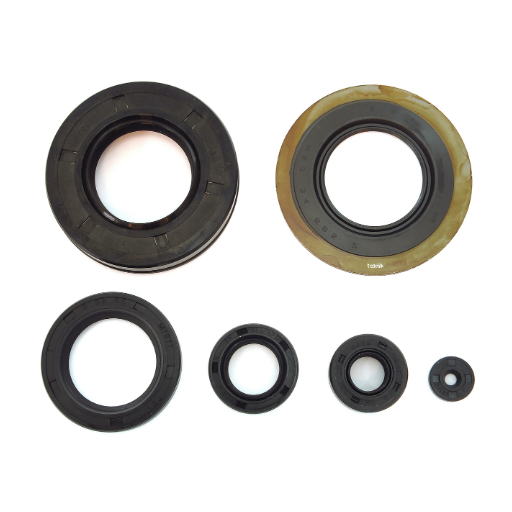
The Impact of Oil Seals on Vehicle Performance
Oil seals protect vehicle operation by preventing lubricant leakage and contaminants from entering critical systems. Without proper seals, components would be in accelerated wear, eventually affecting operation, reducing lifespan, and costing a hefty repair bill. Here are five ways oil seals are affecting vehicle performance:
- Lubricant Retention: Oil seals retain the lubricants inside the allocated areas, like in engine compartments or gear systems to reduce the friction between the movements of parts. Lubricants, when lost, cause the components to get heated, consequently undergoing further wear-out prematurely.
- Contaminant Prevention: Oil seals protect from harmful contaminants like dirt, dust, and moisture by sealing off entry points. Such foreign particles degrade performance and create system malfunctions eventually.
- Enhanced Fuel Efficiency: Properly functioning oil seals prevent excess friction within these systems for easy operation. The result is better fuel efficiency as the engines and transmissions are then able to expend less energy in carrying out their duties.
- Extended Component Lifespan: Oil seals maintain adequate lubrication levels and prevent contamination to extend the service life of critical vehicle components such as crankshafts, camshafts, and wheel hubs.
- Reduced Operational Downtime: Well-maintained oil seals reduce unplanned downtime and maintenance costs caused by system failure due to leaking oil or contamination in the oil for the individual end-user or for the fleet operation.
The use of high-quality oil seals, in combination with regular inspection and maintenance regimes, will maintain vehicle performance while supporting long-term reliability and safety.
Understanding the Industrial and Agricultural Applications
Oil seals function to prevent machinery components, whether industrial or agricultural, from wear, contamination, and leakage. In industrial machinery comprising heavy equipment, pumps, and compressors, oil seals are used to provide smooth operations of shafts and bearings being rotated. These seals keep contaminants such as dirt, dust, or debris from entering the mechanical assemblies, thus preserving operational precision and reducing premature equipment failure. The lesser friction brought about by oil seals also makes the equipment more energy-efficient and increases its lifespan.
In an agricultural setup, oil seals are vital for the working life and dependability of agricultural equipment. Tractors, combine harvesters, and other machines in agricultural operations mostly operate under adverse environmental conditions, such as being exposed to mud, water, and extreme temperatures. Oil seals help these machines to maintain reliable performance over a long time by keeping lubricants intact and contaminants away from the inside. This reliability is essential to agricultural productivity since any downtime of the equipment can severely affect harvest time and efficiency.
I perceive that the high-quality selection of oil seals and periodic maintenance is important, having understood the particular requirements of the application. By doing so, the operator considerably reduces interruptions in operation, avoids high repair costs, and gets the maximum output from their investments in industrial or agricultural machinery. High-performance oil seals are more than mere components; they are essential to the long-term viability and success of the industry.
Frequently Asked Questions (FAQ)
Q: What are automotive oil seals, and why are they important?
A: Automotive oil seals, also known as shaft seals or car oil seals, are essential components used to prevent the leakage of fluids such as oil and grease in mechanical systems. They protect by sealing the gaps between stationary and rotating parts, ensuring optimal performance and longevity of the equipment. The quality of these seals is crucial to maintaining the efficiency of engines and other auto parts.
Q: What materials are automotive oil seals typically made from?
A: Automotive oil seals are commonly made from materials like rubber, EPDM, and other chemical-resistant compounds. These materials are chosen for their ability to withstand a wide range of temperatures and conditions, ensuring durability and effective sealing under various mechanical and environmental stresses.
Q: How do oil seals work in automotive applications?
A: Oil seals function by creating a tight seal around the rotating shaft or axle, preventing the escape of lubricants and the ingress of contaminants. They typically feature a lip that makes contact with the shaft, maintaining pressure and ensuring a seal even under high-speed or high-pressure conditions. The seals are designed to fit precisely in a groove or housing, aided by a spring for additional sealing force.
Q: What factors should be considered when selecting the best oil seal for an application?
A: When selecting an oil seal, consider the operating temperature, pressure, speed, and chemical exposure. It’s important to choose a seal that meets the specific requirements of the application, such as the type of fluid being sealed, the hardness of the material, and the necessary resistance to wear and friction. Consulting with a supplier or manufacturer’s specifications can help in choosing the appropriate solution.
Q: Can oil seals be used in both cars and trucks?
A: Yes, oil seals are used in a wide range of vehicles, including both cars and trucks. They are crucial in maintaining the lubrication of engines and other auto components, preventing leaks and ensuring the longevity of the vehicle parts.
Q: How often should oil seals be replaced in automotive equipment?
A: The replacement frequency of oil seals depends on the operating conditions and the quality of the seals used. Regular inspection is recommended, especially if there are signs of wear, leakage, or mechanical failure. In general, it’s advisable to replace seals during routine maintenance or whenever significant components like the engine or axle are serviced.
Q: Are there different types of oil seals available for specific automotive applications?
A: Yes, a range of oil seals is available, each designed for specific applications. These include radial shaft seals, double lip seals, and o-ring seals, among others. Each type caters to different sealing requirements, such as handling varying pressures, speeds, and environmental conditions, ensuring optimal performance and protection for the specific application.
Q: What is the role of lubrication in the function of oil seals?
A: Lubrication plays a critical role in the function of oil seals by reducing friction between the seal lip and the rotating shaft. This minimizes wear and extends the lifespan of both the seal and the mechanical components. Proper lubrication also enhances the seal’s ability to maintain a tight, effective barrier against contaminants.
Q: How does the manufacturing industry ensure the precision of oil seals?
A: The manufacturing industry ensures the precision of oil seals through stringent quality control processes and the use of advanced equipment. High-precision manufacturing techniques, coupled with regular testing and inspection, guarantee that each seal meets the required specifications for fit, function, and durability.
UCTH213-40J-300 with Setscrew(inch)
CNSORDERNO: Normal-duty(2)
TOGN: UCTH213-40J-300
SDI: B-R1/8
SD: 2 1/2
UCTH212-39J-300 with Setscrew(inch)
CNSORDERNO: Normal-duty(2)
TOGN: UCTH212-39J-300
SDI: B-R1/8
SD: 2 7/16
UCTH212-38J-300 with Setscrew(inch)
CNSORDERNO: Normal-duty(2)
TOGN: UCTH212-38J-300
SDI: B-R1/8
SD: 2 3/8
UCTH212-36J-300 with Setscrew(inch)
CNSORDERNO: Normal-duty(2)
TOGN: UCTH212-36J-300
SDI: B-R1/8
SD: 2 1/4
UCTH211-35J-300 with Setscrew(inch)
CNSORDERNO: Normal-duty(2)
TOGN: UCTH211-35J-300
SDI: B-R1/8
SD: 2 3/16
UCTH211-34J-300 with Setscrew(inch)
CNSORDERNO: Normal-duty(2)
TOGN: UCTH211-34J-300
SDI: B-R1/8
SD: 2 1/8










